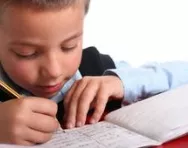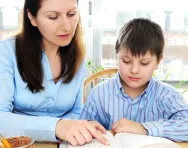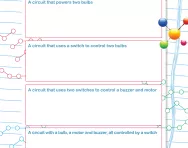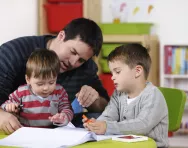Important update from TheSchoolRun
For the past 13 years, TheSchoolRun has been run by a small team of mums working from home, dedicated to providing quality educational resources to primary school parents. Unfortunately, rising supplier costs and falling revenue have made it impossible for us to continue operating, and we’ve had to make the difficult decision to close. The good news: We’ve arranged for another educational provider to take over many of our resources. These will be hosted on a new portal, where the content will be updated and expanded to support your child’s learning.
What this means for subscribers:
- Your subscription is still active, and for now, you can keep using the website as normal — just log in with your usual details to access all our articles and resources*.
- In a few months, all resources will move to the new portal. You’ll continue to have access there until your subscription ends. We’ll send you full details nearer the time.
- As a thank you for your support, we’ll also be sending you 16 primary school eBooks (worth £108.84) to download and keep.
A few changes to be aware of:
- The Learning Journey weekly email has ended, but your child’s plan will still be updated on your dashboard each Monday. Just log in to see the recommended worksheets.
- The 11+ weekly emails have now ended. We sent you all the remaining emails in the series at the end of March — please check your inbox (and spam folder) if you haven’t seen them. You can also follow the full programme here: 11+ Learning Journey.
If you have any questions, please contact us at [email protected]. Thank you for being part of our journey it’s been a privilege to support your family’s learning.
*If you need to reset your password, it will still work as usual. Please check your spam folder if the reset email doesn’t appear in your inbox.
What is a learning log?

Primary school homework can be a chore for children and parents alike. Writing sentences, completing calculations and prescriptive research-based tasks are rarely inspiring, and getting your child to complete them can be an uphill struggle.
A growing number of schools, however, are replacing traditional homework with learning logs: a more creative and open-ended solution which not only appeals more to children, but also helps them learn.
What is a learning log?
A learning log, or learning journal, is a way for children to record their knowledge and understanding in whichever way suits them best, allowing them to take control of their learning.
The learning log itself is a blank-paged exercise book, usually at least A4-size. Each week, children are given a task (or tasks) based around something they’ve been learning at school, or will be learning in the new future. The task is always open-ended, rather than prescriptive, such as in these examples:
- ‘This week, we’ve been learning how to tell the time. Design something to teach other people how to tell the time.’
- ‘We saw lots of exciting things on our class trip to the Natural History Museum. Use these pages to record some of the things you found out.’
- ‘Next week we’re going to be reading the Bible story of Noah’s ark. What can you find out about Noah?’
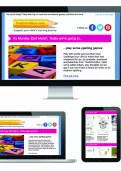
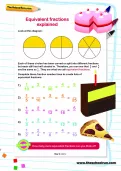
Boost your child's maths & English skills!
- Follow a weekly programme
- Maths & English resources
- Keeps your child's learning on track
The idea is that children can respond to the task in any way they want. They might draw pictures or diagrams, write prose or poetry, take photos, print out pictures from the internet or cut them out of magazines. They can also use any materials they want: pen, pencil, felt tips, paint, glitter, collage, stickers and so on.
The only stipulation is that their work has to fit on one double-page spread of the book. This ensures that the task is self-limiting, and children know how much they’re expected to do. They can, however, extend the page, for example by using flaps, pockets for cards and fold-out sections.
Sometimes, rather than being given a weekly task, children will be given a list of, say, 12 different tasks at the start of a half-term. They then choose one task from the list to complete each week.
The other key element of learning logs is that children get time to discuss and evaluate their work. This usually involves a session at the end of the week where children share what they’ve done, either in pairs, in small groups or as a whole class. They get to look at each other’s work and make comments on it, and reflect on what they’ve learned themselves. Good work is often shared in assembly.
The benefits of learning logs
There are many benefits to children using learning logs. They:
- Help children consolidate and extend what they’ve been learning in school.
- Encourage them to learn independently and to be creative.
- Help children take an active part in their learning, and be proud of their work.
- Are directed by the child, rather than the teacher, so each pupil can work at the right level for them, and be led by their own strengths and interests.
- Help children develop research skills.
- Cater for all abilities and learning styles: for example, a child who is a visual learner may draw lots of pictures and diagrams.
- Help to develop a partnership between home and school.
- Help teachers assess whether each child has understood the learning objective.
Ofsted recognises the role that learning logs can play in children’s learning. Inspectors have commented that, ‘personalised learning logs, in which pupils record their research and investigations at home, contribute strongly to their enthusiasm for learning and ability to write at length,’ and, ‘the use of home learning logs successfully develops pupils’ enthusiastic attitudes, and pupils show off their efforts to all who will listen.’
What children think about learning logs
Children are enthusiastic about learning logs because they can approach the task in whichever way suits them. Comments from Year 6 children at Inglehurst Junior School – one of the schools that pioneered the learning log approach to homework – include:
‘I enjoy doing my learning log because we can talk to our teachers through our learning log. We can personalise them which makes it our own. On Thursdays we do peer partnership sessions, which is when we ask others about what they have been learning.’
‘I think learning logs are great because you can develop your own style, which makes yours different to everybody else’s. They are great for SATs revision.’
Helping your child with their learning log
Although learning logs are supposed to promote independent, child-led learning, there are nevertheless ways that you can support your child’s work.
- Encourage your child to talk about their task for the week. The process of explaining it to you will help consolidate their understanding and focus their mind on the direction they want to take.
- Set aside some time for your child to complete their learning log. Be led by them; some children like to do a little every day, while others prefer to do it in one session.
- Offer ideas for how they might present their work, and give them access to the resources they need, whether that’s the internet, information books, craft supplies, etc.
- Encourage your child to try different ways of filling in their learning log, rather than doing the same thing every week.
- Look at your child’s finished work with them and help them evaluate what they’ve done.
